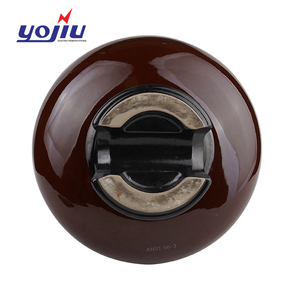Understanding Polymeric Insulators
Polymeric insulators are crucial components in the electrical transmission and distribution systems. Designed from advanced polymer materials, these insulators provide superior performance compared to traditional ceramic or glass insulators. They play a pivotal role in ensuring that electrical systems function efficiently while maintaining safety and reliability. The development of polymeric insulators has marked a significant advancement in insulation technology, enabling longer service life and reduced maintenance costs.
Types of Polymeric Insulators
Polymeric insulators come in various types, each tailored for specific applications and environments. Here are the primary categories:
- Suspension Insulators: Used predominantly on overhead transmission lines, these insulators can withstand high mechanical loads, providing stability and support.
- Post Insulators: Commonly installed in substations, post insulators help in securing electrical equipment while providing insulation from the ground.
- Line Insulators: These insulators are typically used to connect two conductors, crucial for safe transmission of electricity across distances.
- Bridging Insulators: Designed to fill gaps and provide insulation in electrical installations where space or physical arrangement presents challenges.
Applications and Advantages of Polymeric Insulators
The applications of polymeric insulators are diverse, serving numerous industries and sectors. Some key applications include:
- Power Transmission Lines: Widely employed in high-voltage transmission lines due to their lightweight properties and durability.
- Substations: Essential for insulating equipment and connecting conductors to ensure efficient power distribution.
- Renewable Energy Systems: Increasingly utilized in wind and solar energy applications, supporting the move towards sustainable energy solutions.
- Telecommunications: Used in securing communication lines and transmitting signals without electrical interference.
These insulators offer numerous advantages:
- Lightweight: Polymeric insulators weigh significantly less than traditional insulators, making them easier and more cost-effective to transport and install.
- Corrosion Resistance: The polymer materials resist environmental degradation, enhancing longevity and reducing maintenance needs.
- High Performance: Capable of withstanding extreme weather conditions, polymeric insulators maintain their insulating capabilities across a variety of scenarios.
- Safety: Their non-conductive properties minimize the risk of electrical hazards, contributing to safer operational environments.
Choosing the Right Polymeric Insulator
Selecting the appropriate polymeric insulator is critical to ensure safety and functionality in electrical systems. Here are some factors to consider:
- Voltage Rating: Ensure that the insulator can handle the maximum voltage that will be present in the application to prevent breakdowns.
- Environmental Conditions: Assess the climatic conditions (humidity, temperature, pollution) the insulator will be exposed to. Different polymer types perform better in various environments.
- Mechanical Load Capacity: Consider the physical stresses the insulator will encounter, ensuring it can withstand these demands without failure.
- Installation Requirements: Evaluate the installation environment to select an insulator that is easy to install while still meeting safety and regulatory standards.
In conclusion, polymeric insulators are a transformative technology in the field of electrical and system engineering. By understanding their types, applications, advantages, and selection criteria, businesses can enhance the efficiency and reliability of their electrical systems while ensuring safety and performance.
































































































































